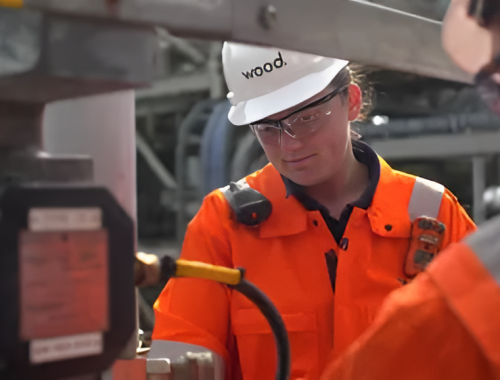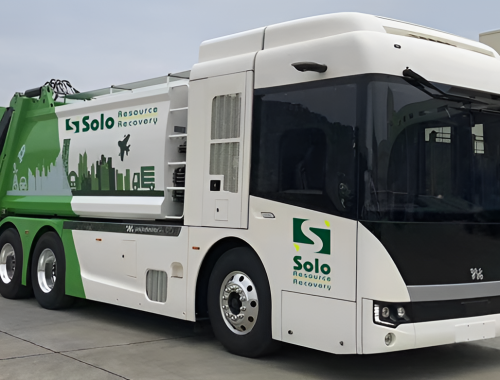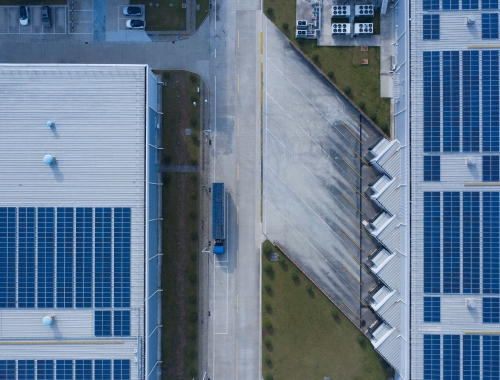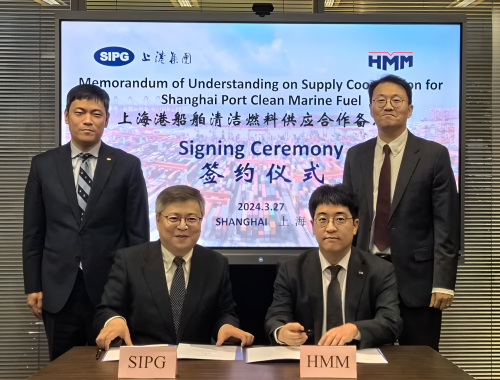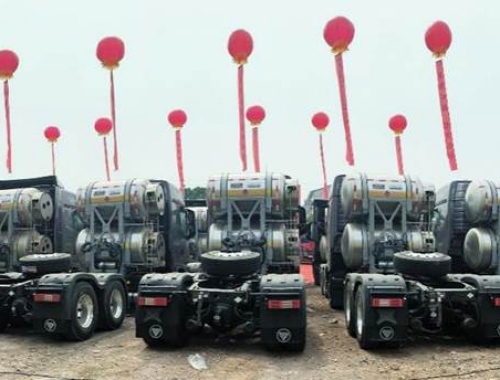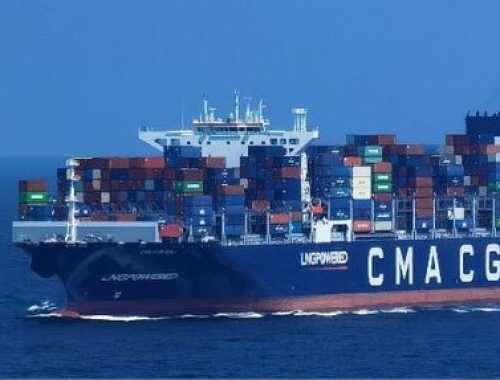Full steam ahead for LNG bunkering in China
SUMMARY
China boasted 490 LNG-fuelled ships in mid-June, and the fleet is set for major growth in the coming years.
By Shi WeijunPOSTED IN:
It is full steam ahead for LNG bunkering in China despite recent signs of methanol gaining momentum as an alternative fuel. LNG as a decarbonisation fuel for the hard-to-abate shipping sector is outpacing methanol and other competitors in China, as evidenced by a growing orderbook for LNG-powered vessels and the buildout of bunkering infrastructure to refuel them.
China – which recently overtook Greece as the world’s largest maritime fleet owner – had 490 LNG-powered ships in mid-June that were mainly river-going inland vessels, according to figures provided by the China Waterborne Transport Research Institute. Of the total fleet 290 were operating in the Yangtze River Delta in eastern China and another 180 in the Pearl River Delta in the south, while 20 were plying the waters along the coast. They ranged from dry bulk carriers and containerships to harbour tugs and LNG carriers.
The LNG fleet is set for major growth in coming years. The National Development and Reform Commission, the country’s state economic planner, is studying pro-LNG policies in the shipping industry and wants more than 1,000 LNG-powered vessels plying the Yangtze River within three years.
The southern province of Guangdong – home to two of China’s biggest ports and the mouth of the Pearl River – plans to add another 50 ships in the second half of this year. The neighbouring region of Guangxi has more than 50 ships under construction and another 70 ships on order. The eastern coastal province of Jiangsu and inland province of Hubei also plan to build a batch of new ships.
This compares with a handful of methanol-fuelled ships under construction. A Wuhan subsidiary of state-owned China Energy Investment Corporation announced plans in March to build a 10,000-metric ton methanol-marine diesel hybrid bulk carrier for operation along the Yangtze River. The absence of any operational methanol ships means there is no bunkering infrastructure in China.
Methanol in the mix
Methanol’s struggle to make waves in Chinese shipping contrasts with its increasing traction in the global industry, where green methanol has been touted as a ‘drop-in’ fuel capable of leading the shipping industry’s push towards decarbonisation.
Five of the world’s biggest shipping companies – including China’s state-owned COSCO Shipping – had a combined 94 methanol-capable containership newbuilds on methanol on order as of late September. This is a strong indication that green methanol has emerged as their low-carbon fuel of choice.
Methanol is an attractive alternative to traditional fuel oils due to its chemical properties and inherent similarities to heavy fuel oil (HFO). Though it has a lower energy density, methanol has similar combustion properties as HFO. Methanol is also a liquid at room temperature, making storage and handling much simpler than for LNG and ammonia.
A second driver behind methanol’s potential as a marine fuel is its ‘drop-in’ capability, as dual-marine engines can burn and operate on both methanol and HFO. Lastly, as the costs of biomass, green hydrogen and captured CO2 all decline, green methanol is forecast to become more price-competitive with traditional fuels in the long term.
Chinese bunkering buildout
The Chinese LNG fleet expansion has been complemented by an expansion of bunkering infrastructure, via barges, tanker trucks, shore-based facilities and ship-to-ship. There were 23 shore-based and barge bunkering stations serving key waterways in mid-June – 11 along the Yangtze, two along the Xijiang, seven for the Beijing-Hangzhou Grand Canal, and one within the Yangtze River Delta. The remaining three were in stable operation.
Ship-to-ship bunkering is available in China’s major ports of Shanghai, Shenzhen and Ningbo, with two more operations under development, while tanker truck bunkering is available in more than 10 ports.
The LNG shipbuilding boom in China underlines the view that LNG has a strong claim to being the decarbonisation fuel of the future. “What we need to remember is that fossil fuels are free. It’s in the ground, we just have to take it, ship it and do some logistics,” Adnan Ezzarhouni, China general manager for French engineering group GTT, said at the 5th Shanghai International LNG Shipping Forum on September 22.
“When it comes to green fuel, we need to create the fuel… how to create the fuel? We need always to start with solar and wind, take the water, make hydrogen and then with the hydrogen, continue the process with more nitrogen or more CO2 in order to come up with the final fuel. When you compare a fuel that is in the ground with a fuel that you need to make, of course the fuel that you need to make will be more expensive,” said Ezzarhouni.
For this reason LNG is the best transition energy for the shipping industry, according to Ezzarhouni. Compared with marine diesel, which produces carbon emissions of 0.69 kg/kWh on a full well-to-wake basis, LNG emits 0.53 kg/kWh while methanol and ammonia are more carbon-intensive at 0.72 kg/kWh and 0.79 kg/kWh respectively. LNG combustion also produces less emissions of other key pollutants such as nitrogen oxide, sulphur dioxide and particulate matter than the other key fuels.
“We have seen methanol but of course methanol is polluting more. Methanol only has the interest if it is bio- or e-methanol, which is really the main challenge. Methanol has a huge advantage to not be cryogenic, easy to handle, but has a very tough challenge to be available, which is not the case today,” said Ezzarhouni.
“Ammonia is also very attractive on paper because there is no CO2. But obviously… ammonia is very toxic. Ammonia is good when it is green ammonia… if it is grey ammonia from fertiliser or industry, there is no meaning [to use it].”
Methanol availability in doubt
While there is great optimism for green methanol within the shipping industry outside China, there are still significant hurdles across the value chain for widespread methanol adoption. Independent forecasts suggest green methanol production capacity will reach 5.5mn t/year by 2027 – roughly 11 times today’s capacity.
This is an enormous increase, but is just a fraction of what will be needed to keep the methanol-capable fleet refuelled. Green methanol production would need to exceed 540mn t/year to fully replace all marine fuel in 2050, but feedstock cost and availability would pose huge challenges to scaling production to such levels.
The distribution of green methanol’s production capacity in relation to where the world’s major bunkering ports are located could be another barrier to adoption. The world’s 12 largest bunkering hubs account for roughly 40% of worldwide ship bunkering, with Singapore alone accounting for 16% of all marine fuel sales last year.
The problem is that many of the world’s biggest green methanol producers are thousands of km away. Transporting large quantities of green methanol to these traditional bunkering ports both threatens supply chains and pushes up bunkering costs, suggesting that a significant revamp in shipping infrastructure must occur before green methanol can be widely adopted.
The price is right for LNG
Affordability is a consideration too as the price of LNG stands at around $38/MWh compared with $55/MWh for marine diesel, $70/MWh for methanol and $66/MWh for ammonia, according to Ezzarhouni. And the infrastructure for serving LNG-fuelled vessels is more developed than for methanol and ammonia counterparts.
LNG’s price advantage as a bunker was underlined in a presentation at the Shanghai forum by James Frew, business consultancy director at Lloyd’s Register. Whether gas prices are high or low, LNG-powered X-DF vessels will enjoy lower fuel bills over a 20-year period than those running on methanol-marine diesel, LPG, or HFO with a scrubber, according to Frew.
An LNG X-DF vessel in a low gas price environment will have the lowest total cost of ownership (TCO), followed by HFO and scrubber, and then an LNG X-DF vessel under high gas prices – TCO for all three comes in well below $300mn. The methanol-marine diesel will have the highest TCO at nearly $400mn.
LNG is the cleanest, most affordable and most available fuel for decarbonising shipping today, but its derivatives bio-LNG and e-LNG could become more popular in the near future. While LNG emits 22% less greenhouse gas emissions than marine diesel, bio-LNG would emit 84% less and e-LNG even lower at a reduction of 96% – although the latter assumes wide availability of green hydrogen.
Bio-LNG is already accessible in approximately 70 ports worldwide, including major hubs like Singapore, Rotterdam, and the US east coast, according to analysis published on July 27 by SEA-LNG, the coalition advocating for the use of LNG as a marine fuel. Bio-LNG could cover 3% of total energy demand for shipping fuels by 2030, rising to 13% by 2050, according to a study last year by Singapore’s Nanyang Technology University that was commissioned by SEA-LNG.



